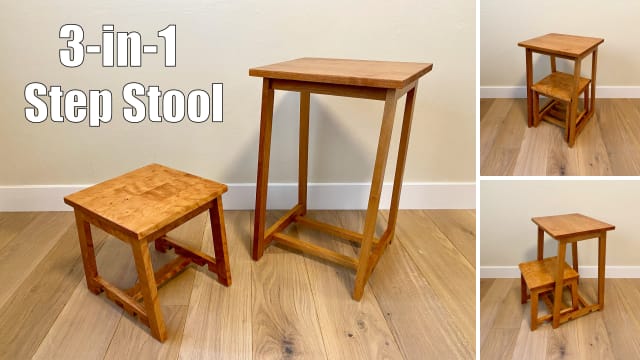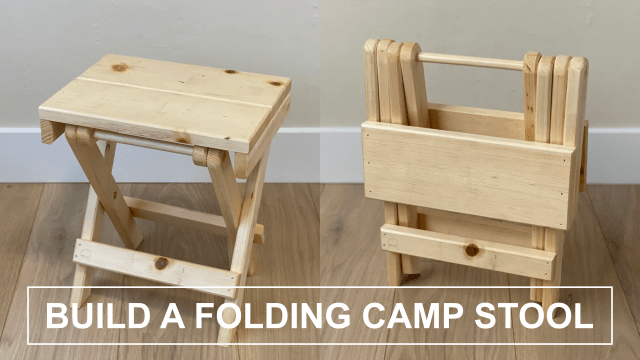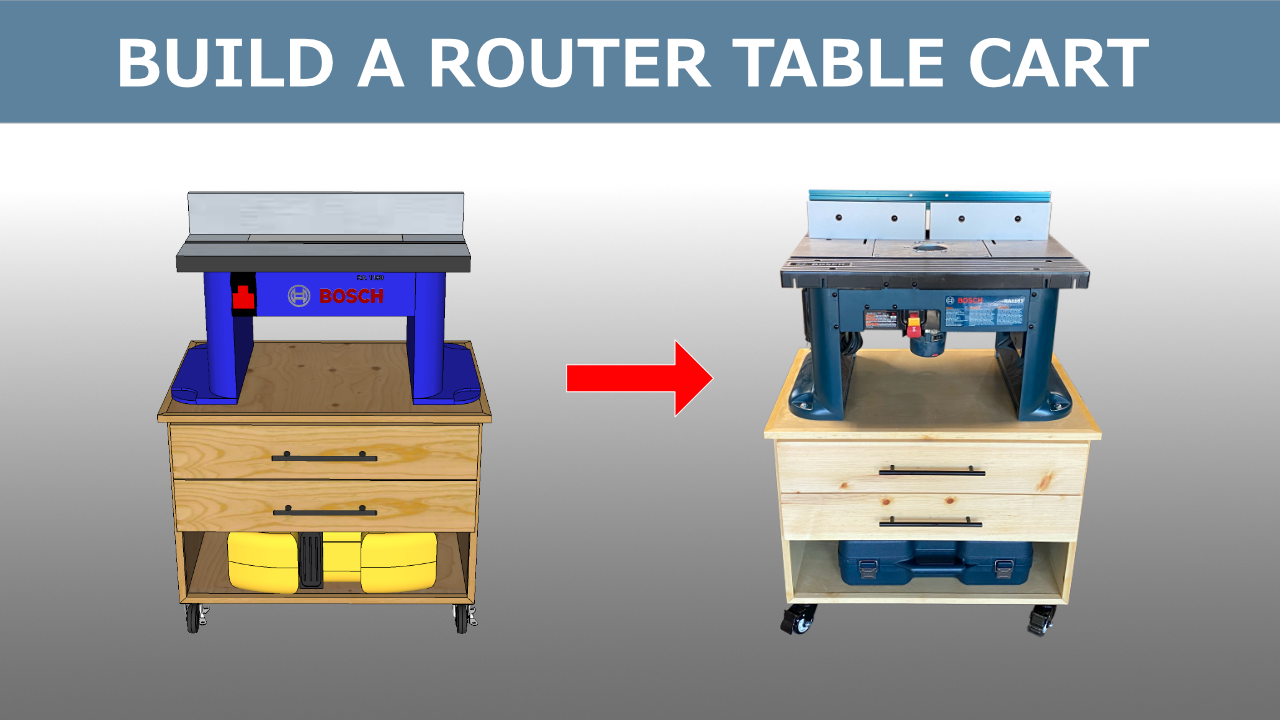$500 for buying woodworking tools is a breaking point. The major difference is that you can start entering the world of stationary tools.
All articles in the series:
- Beginner Woodworking Tools Under $100
- Beginner Woodworking Tools Under $250
- Beginner Woodworking Tools Under $500
- Beginner Woodworking Tools Under $1000
Stationary vs Handheld Tools
A stationary tool, by its name, is stationary 🙂 The major difference between stationary and handheld tools is that when you work on stationary tools, the tools don’t move, the working piece move; while on handheld tools, the working piece is fixed, while the tool is moving.
This is a significant difference, and typically stationary tools yield the best result as they are more stable. This is because the moving parts (e.g., saw blades) are rigidly operating within the stationary tool’s body and offer a lot stability. Further, you are also moving the piece which offers better control since the piece does not vibrate by itself, and you can usually see clearing where the operating point and line is. For example, if you are sawing a piece at a table saw, you usually move the wood piece at a steel bench which is super stable, whereas when you are cutting a piece using circular saw, you move the saw which might warble as it vibrates heavily.
As a result, the stationary tool has to have a much larger footprint at your shop to offer its advantage. And again as a result, it loses mobility. However, you don’t benefit from mobility a lot if you are a weekend warrior that build things at your garage. The mobility makes most sense if you are a contractor or working on various home improvement projects when you need to carry the tools around or on site.


My List
With $500 budget, things become a lot more interesting. Here’s a summary of what I would recommend with this budget. The major addition, is a table saw.
- Table saw (~$250)
- Drills/drive set ($100)
- Sander ($50)
- Jigsaw / circular saw ($50)
- Accessories ($50), or a Shop Vac ($50)
Table saw
99% (if not 100%) of woodworker would not argue that table saw is first stationary tool to get into. It is the workhorse of your shop. With proper jigs and project design, it should fit your need 99% of the time.
There are many variations of table saw that can be roughly categorized with their sizes and usage: cabinet saw, jobsite/compact saw and hybrid saw. For beginner, I would argue getting a cheaper but reputable compact table saw and upgrade later when necessary is the best choice. You should aim at $250-$400 investment here. There are some nice options that is slightly north of $500, and those are really great ones, but I’ll try to stick to our budget here.
Except for the discontinued DW745, I didn’t see a clear winner here. So I’ll list a few saws here for reference:


- DW745. This was arguably the best one in the market until it is discontinued recently. If you see it locally, I highly recommend grabbing one. It used to be on sale for around $250.
- DW7485 ($374). Successor of DW7485. Everything is pretty much the same as DW745 and potentially better, except that the blade size is 8 1/4 and more expensive. I personally don’t like it as the most commonly available saw blade is 10 inch, and I can easily swap it with my miter saw if needed. If you don’t mind the size (and probably you shouldn’t if you are absolutely new to woodworking), this is the one you should get.


- Ridgid r4518ns ($279). Another popular option is Dewalt ones are not available. You can also get the slightly bigger version r4514 with stand at around $349 when it’s on sale.
- Ryobi RTS08 ($119). When the others are not available, I tend to fall back to Ryobi. This recently introduced version has 8-1/4 inch blade, and has pretty good review at HomeDepot. Alternatively, the older, 10in version RTS12 costs $189 but it comes with a a stand.
Great, do I still need a circular saw?
It depends, but considering you can get it at a really cheap price ($20-40), probably just get one.
When I got a table saw, circular saw becomes much less used but still necessary. The main use is to rip a large 8x4 plywood sheet down to manageable sizes before you can put them on your compact table saw. There are two alternatives to this though:
- You build a large enough bench for you to hold the full sheet of plywood evenly and safely.
- Typical home centers including Home Depot and Lowes offer to cut the plywood down for free (for the first few cuts). If you plan ahead, this is a very good way. For example, you can cut them down to 4x2 pieces. This is important for people like me that only has a small sedan and can’t haul the 8x4 sheet back.
Consider getting a shop vac
Woodworking produces a lot of dust, and it is bad for your health. Professional shops deploys a sophisticated central dust collection system, thanks to their large space and lots of stationary tools. These are relatively expensive and I probably won’t get to that at this point.
A small shop vac comes in handy. It is relatively small size and have good mobility, you can easily plug into any of your tool and start using it. Now that you’ve got a table saw, it’s a good idea to get one to collect the dust from table saw. A small one like this costs only $50, but it goes a long way in keeping the shop clean and guard your health.

I heard people talk about miter saw a lot, and it seems quite handy, should I get one?
 I have mixed feeling towards miter saws. On one hand, it is definitely much quicker to cross cut a piece when a miter saw station is ready there for you to use. On the other hand, you can easily achieve this using a table saw with a cross-cut sled. Plus, miter saw typically cuts less precisely than a table saw even after careful calibration, especially on a sliding miter saw. I still enjoy it for quick rough cutting and do repeating cuts quickly though, but I would only get it once you have a higher budget, e.g., $1000.
I have mixed feeling towards miter saws. On one hand, it is definitely much quicker to cross cut a piece when a miter saw station is ready there for you to use. On the other hand, you can easily achieve this using a table saw with a cross-cut sled. Plus, miter saw typically cuts less precisely than a table saw even after careful calibration, especially on a sliding miter saw. I still enjoy it for quick rough cutting and do repeating cuts quickly though, but I would only get it once you have a higher budget, e.g., $1000.
PS. there is cheap options here if you do wish to get one. I’ve personally used this one and it cuts great and only costs $89 when on sale (which happens quite often).
Conclusion
With $500 budget, you should be a able to get a table saw, your first stationary tool. This will truly unlock the precision and possibility of your woodworking tour. These tools should be able to last you for a while.





Comments